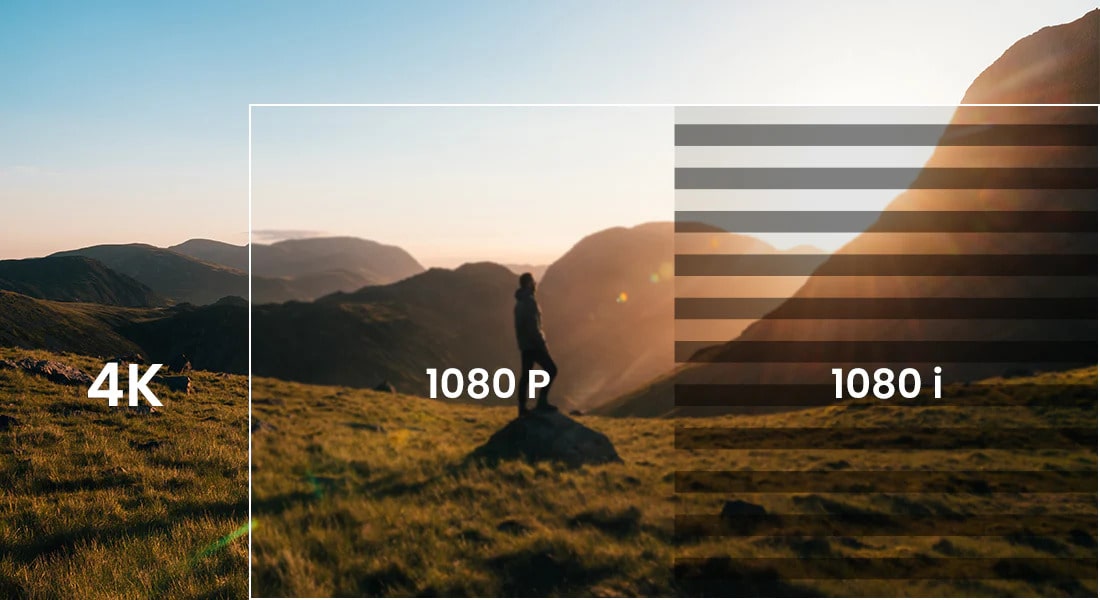When it comes to high-definition video, two common terms you might come across are 1080p and 1080i. Both refer to the resolution of the image, specifically the number of horizontal lines that create the picture on your screen. But what do these terms mean, and how do they affect your viewing experience? Let's break down the differences and see which one might be better for you.
What's the Difference?
The main difference between 1080p and 1080i lies in how the image is displayed on your screen.
- 1080p (Progressive Scan): In 1080p, the "p" stands for progressive scan. This means that all 1,080 horizontal lines of the image are displayed simultaneously. Each frame is shown in its entirety, providing a complete picture every time the screen refreshes. This method results in a smoother and clearer image, especially noticeable during fast-moving scenes.
- 1080i (Interlaced Scan): In 1080i, the "i" stands for interlaced scan. This means the image is split into two fields: one containing the odd-numbered lines and the other containing the even-numbered lines. These fields are displayed alternately, with the odd lines shown first, followed by the even lines. This process happens quickly enough that the human eye blends them together into a single image. However, this can sometimes result in a less smooth picture during fast motion because the two fields are not shown at the same time.
Which is Better?
Determining which is better depends on your specific needs and the type of content you’re watching.
- Image Quality: Generally, 1080p is considered superior in terms of image quality. Because it shows all lines at once, it provides a sharper and clearer picture, especially during scenes with a lot of movement. This makes it a great choice for sports, action movies, and video games.
- Broadcasting and Bandwidth: 1080i can be more efficient for broadcasting because it uses less bandwidth. By splitting the image into two fields, it reduces the amount of data that needs to be transmitted at one time. This is why many TV channels, especially those broadcasting over the air or through cable, use 1080i. It’s a good balance between quality and efficiency.
- Viewing Devices: Modern TVs and monitors are typically designed to handle both 1080p and 1080i. However, progressive scan (1080p) is generally better suited for larger screens and high-definition displays because it takes full advantage of the screen's resolution.
- Content Type: If you’re mostly watching fast-paced content like sports or playing video games, 1080p is likely the better choice due to its smoother image quality. For regular TV shows, news broadcasts, and other content where bandwidth efficiency is more critical, 1080i might be sufficient and more practical.
While 1080p offers better image quality due to its progressive scan method, 1080i provides a good balance of quality and efficiency, making it suitable for broadcast television. The best choice depends on your viewing habits, the type of content you enjoy, and your specific equipment.
















